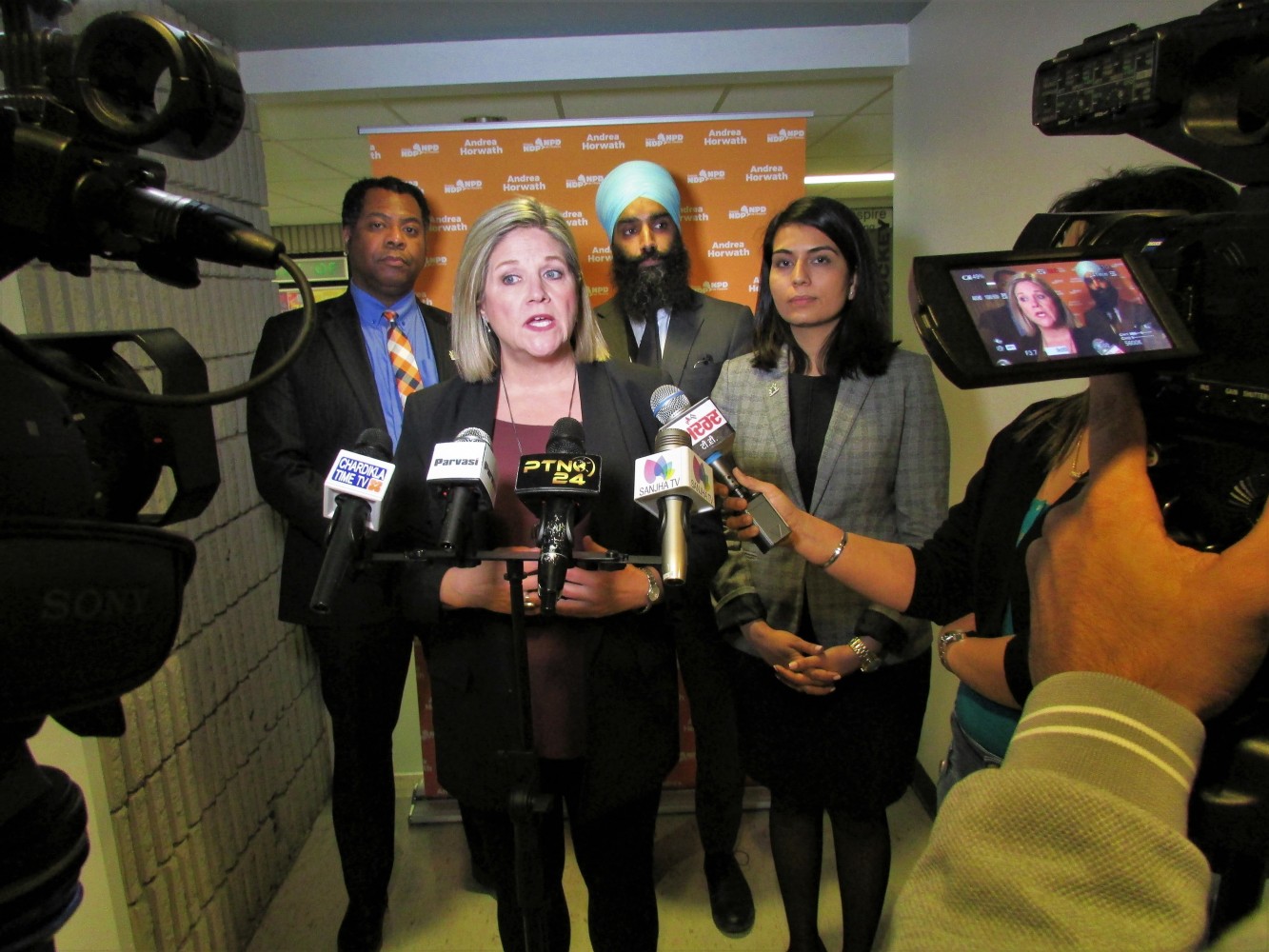
‘The People of Brampton are seeing their community punished by this government’
For the second time, the NDP have tried to force approval of a third hospital for Brampton, and for the second time the PCs have voted it down.
On Monday, NDP Leader Andrea Horwath introduced a motion inside Queen’s Park attempting to have funding for a third hospital in Brampton, and for Phase II of Peel Memorial, included in the upcoming PC fall economic update, expected later this week.
“The government needs to stop ignoring the needs of the people of Brampton,” Horwath said in the Legislature. “What’s happening is the people of Brampton are seeing their community punished by this government.”
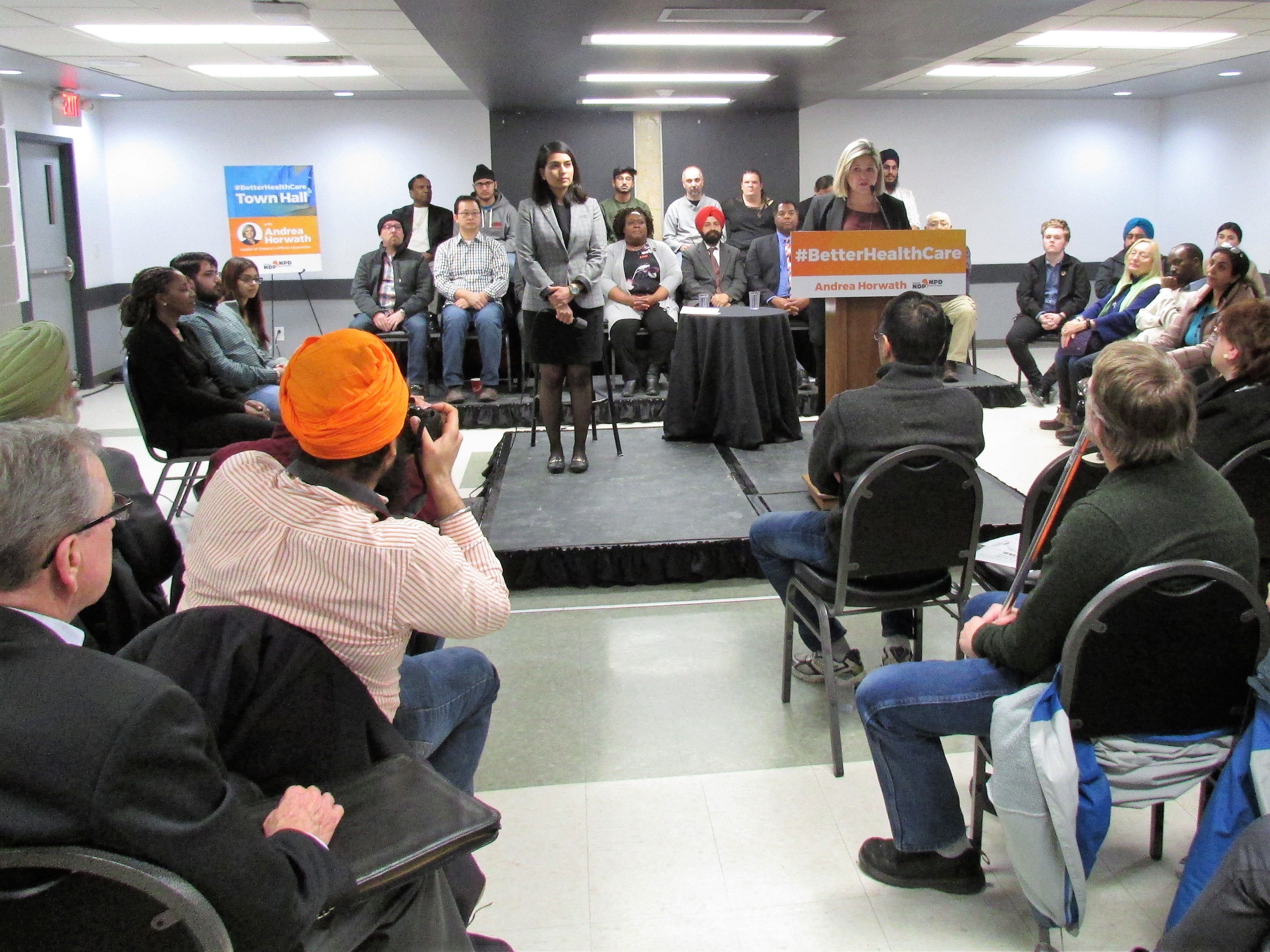
NDP Leader Andrea Horwath in Brampton early this year to address the city's healthcare crisis
The motion was similar to one put forward by the NDP in October of 2018 calling for funding for a third hospital in Brampton, a motion that lost on a vote 65 to 35 with Brampton’s PC MPPs Prabmeet Sarkaria (Brampton South) and Amarjot Sandhu (Brampton West) absent from the vote. This time, the motion lost 63-28 but both Brampton’s PC MPPs crossed the aisle to vote in favour of the NDP motion.
All three of Brampton’s NDP MPPs also stood at Queen’s Park to call on the PC government to move forward with fixing the growing hallway healthcare crisis in their city. In response, several PC MPPs defended their party’s record on trying to solve the crisis. However, at the same time several PC MPPs used their chance to speak on Brampton’s dire situation to instead celebrate healthcare investments in their own ridings, the exact type of investments that Brampton has been lacking for years, plunging the city into its current situation.
Sara Singh (Brampton Centre), the deputy leader of the Official Opposition, said it’s no surprise that Brampton’s healthcare system has degraded over the last decade, pointing to the historic underfunding that has plagued the city.
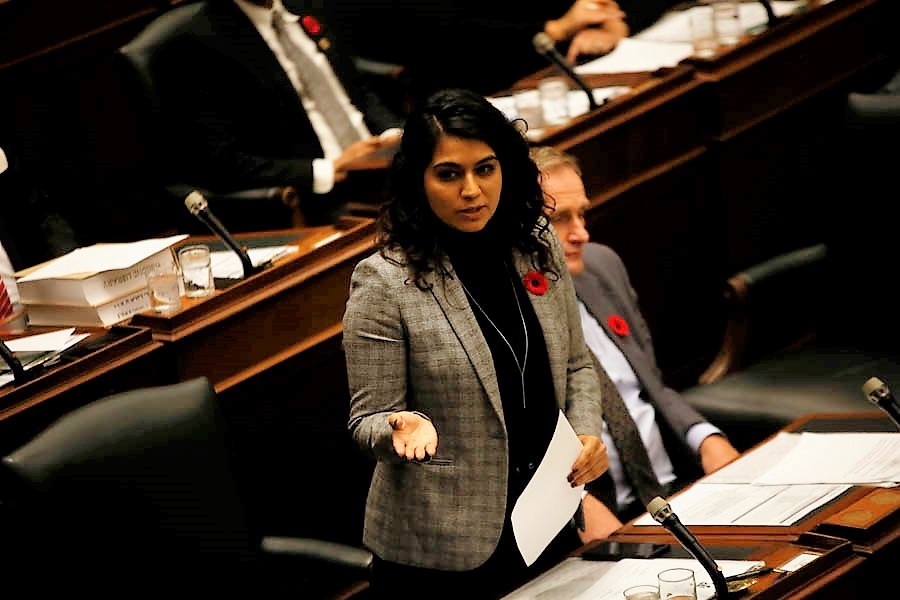
Brampton NDP MPP and Deputy Leader Sara Singh last year in the legislature
Currently, Brampton receives approximately $1,000 less per capita for healthcare spending than the provincial average, and has 55 percent fewer hospital beds than the rest of the province. A fact that none of the PC MPPs chose to address or explain in their statements, when they made repeated claims of investing responsibly in the city’s healthcare system.
The lack of investment, including being left out of a $90 million funding package the PCs gave to other communities specifically to address “hallway healthcare”, a term popularized in Brampton, has led to the city becoming the province’s go-to example when hallway medicine is dealt with.
Recent data from the NDP, obtained through freedom of information requests, shows that Brampton Civic, the city’s lone full-service hospital, has been operating at 101 percent to 106 percent capacity for all of 2019, well beyond the recommended standard of care of 85 percent. Peel Memorial, the city’s preventative-care facility, which opened in 2017 with the intention to relieve the increasing patient burden experienced at Civic, started the year operating at 557 percent capacity, a number that increased to 587 percent in April and continued into June, the last month for which data was provided by the William Osler Health System, which manages the city’s network.
“What we have is a critical overcrowding problem,” said Kevin Yarde (NDP-Brampton North).
Several PC MPPs agreed it was the previous Liberal government who created the problem through a lack of investment, but added the NDP are also complicit in the crisis because of support of the governing Liberals during their 15 years in power.
“We are undertaking transformational change in the healthcare system that was left on life support by the previous government supported by (the NDP),” Sarkaria said. “When our government talks about ending hallway healthcare we’re talking to Brampton patients.”
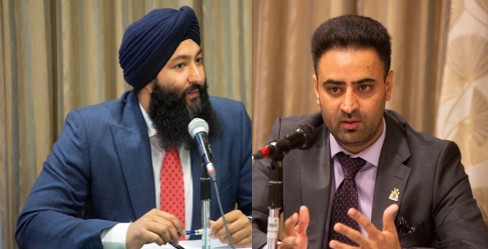
Brampton's PC MPPs, Prabmeet Sarkaria, left, and Amarjot Sandhu
Sarkaria went on to detail small investments the PCs have made into Brampton and Peel’s healthcare system, including $3 million for mental health programs, $500,000 to help the William Osler Health System move forward with studies for Phase II of Peel Memorial and $1.5 million to Osler for infrastructure renewal to ensure the hospital continues to meet safety standards. None of these investments impact the acute chronic bed-shortage in the city.
“The reality is, every action we’ve undertaken since the people of Ontario has elected us, has been done to make life better for Brampton,” he said, adding that the government is “looking forward” to receiving the proposal from Osler for Phase II of Peel Memorial. The Pointer reported last week that Osler believes any new hospital infrastructure in Brampton will not be ready for another five to eight years.
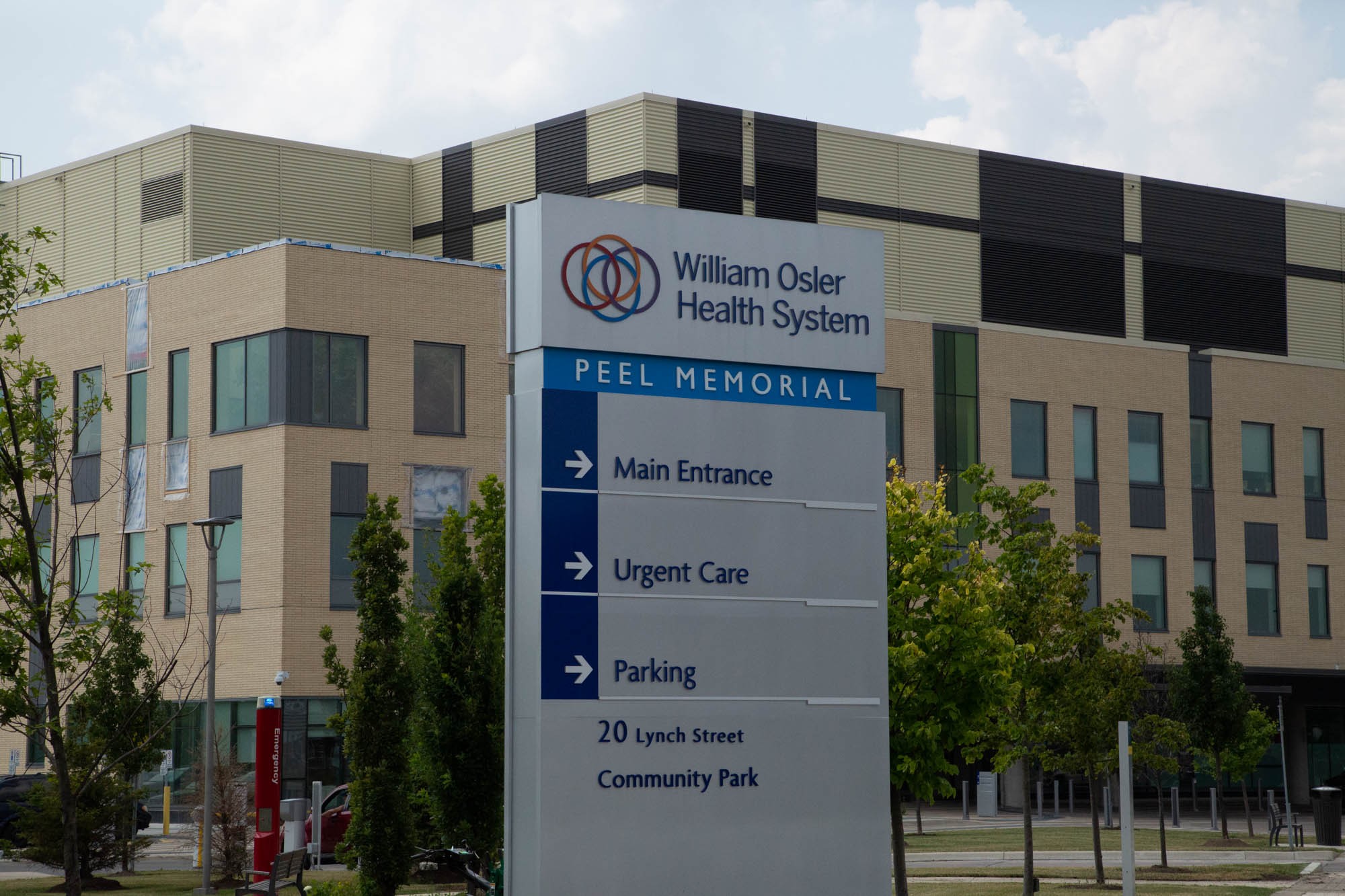
The investments mentioned by Sarkaria pale in comparison to the sums other municipalities have received over the past few years for major, state-of-the-art hospital projects.
Vaughan received $1.6 billion for the Mackenzie Vaughan Hospital, currently under construction. Under the previous Liberal government, the province also paid for planning and construction of the new Oakville Trafalgar Memorial Hospital (opened late 2015), on top of provincial land donated to the project.
Sarkaria did not address what his government is doing to reduce the alarming gap in Brampton’s per capita hospital bed-count, which widens every year as the city’s population growth continues to outpace the provincial rate.
Earlier this year, the PC government announced it was pouring $90 million to address “hallway healthcare”, including 1,100 new beds, with hopes they would ease the burden during the last flu season, and beyond. A further 15,000 beds are being added over the next five years.
Brampton didn’t get any of the $90 million, and it’s unclear how and where the province will allocate the 15,000 beds.
The PCs also continue to reiterate their planned $27 billion investment in hospital infrastructure over the next 10 years for more than 3,000 new beds. This number was repeatedly referenced during Monday’s debate. Though the issue was squarely about Brampton and its need for a new hospital, no PC member who repeated the $27 billion figure stated whether any of those funds would go toward a third hospital in the city.
“We are creating a modern, 21st century, long-term care system,” said Merrilee Fullerton (PC-Kanata-Carleton), minister of long-term care, pointing to the approximately 461 long-term care beds the PCs have invested in Brampton seniors’ facilities as a sign they are working to take pressure off the city’s overcrowded hospitals.
“It’s a drop in the bucket compared to what we actually need in the region,” Sara Singh told The Pointer last week. “When you look at the region which has been so chronically underfunded for decades, frankly, the allocation of 150 to 200 beds, really doesn’t do anything to address the underlying problem.”
PC MPP Robin Martin (Eglinton-Lawrence) accused the NDP of “playing partisan games” with their motion, pointing to a $525,000 investment in youth residential treatment and withdrawal management services in Brampton as well as $30,000 for rapid response navigators to assist youth with urgent mental health needs. It’s unclear why she was referring to small investments that do not have much, if any, impact on the city’s chronic bed shortage. While these sorts of narrow investments could prevent a handful of hospital visits, they do almost nothing to address the system-wide problem in the city.
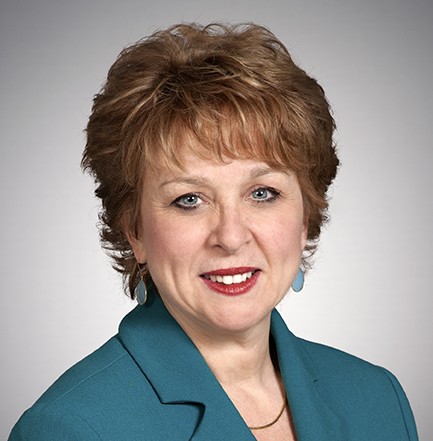
PC MPP Robin Martin
Martin said the NDP should work on coming up with solutions to the hallway healthcare problem as opposed to constantly criticizing the efforts being made, which are ongoing across the province, she said.
“Brampton isn’t the only community that has suffered under these lack of investments (by the Liberals),” she said. “We’ve got a whole province to make investments in.”
Her tone deaf comment, failing to understand that Brampton receives the lowest per capita healthcare investment in the province and has less than half the number of hospital beds per 1,000 residents compared to the provincial average, was the theme of the PCs for much of the afternoon.
It became clear that Brampton taxpayers, despite paying the same tax rates as those throughout the province, were not going to get any sympathy from the PCs.
The party would not acknowledge the extent of the city’s crisis, with between 3,000 and 4,300 patients being forced to be treated in hallways each year since 2016 inside Brampton Civic Hospital.
The continued lack of concern displayed by the majority government does not bode well for families in the city, and the NDP, seem powerless to do anything about it.
“Right now, we’re at a breaking point in Brampton,” Yarde said.
Email: [email protected]
Twitter: @JoeljWittnebel
Submit a correction about this story


